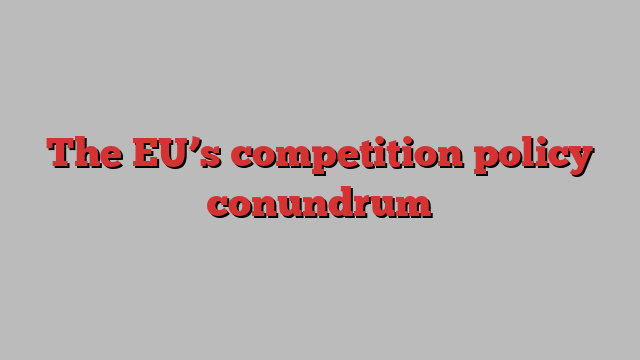
Unlock the Editor’s Digest for free
Roula Khalaf, Editor of the FT, selects her favourite stories in this weekly newsletter.
EU antitrust policy has long been lauded for protecting against abuses of market dominance and monopolistic price-gouging. But is it stifling the creation of European world-beaters? Sometimes it may be, according to the recent report on reviving EU competitiveness from former European Central Bank governor Mario Draghi. Spain’s Teresa Ribera, nominated as the EU’s new competition chief, has been told to develop an approach “more supportive of companies scaling up in global markets”. It is surely right to ensure EU antitrust regulations are keeping pace with dizzying changes in technology and the global economy. But the aim should be for evolution, not revolution.
Draghi argued competition policy should take greater account of the need to create businesses that can compete with US and Chinese giants, not just preserving competition within the EU market. Merger policy should also weigh whether tie-ups will stimulate innovation, and not focus only on price effects. An “innovation defence”, he suggested, could allow tech or other research-intensive companies to argue that by merging they could achieve the scale needed to plough more into innovation. The EU might switch to policing some such mergers post-approval — for example, by ensuring they stick to agreed investment targets.
One key to a successful approach, however, must be to identify where lack of scale in EU companies is genuinely the fault of competition rules rather than remaining obstacles to competition across national borders. In very fragmented sectors such as telecoms, banking or defence, having fewer companies might indeed strengthen EU competition and investment, and enhance Europe’s ability to compete globally. But national protections or regulatory barriers have been more responsible than merger rules for thwarting consolidation. Completing the single market is at least as important as tweaking antitrust regulations.
In highly consolidated sectors, granting regulators to permit, say, a two-into-one merger could create a European company capable of holding its own against other giants in global export markets. Draghi hinted his approach would have permitted the train megamerger between France’s Alstom and Germany’s Siemens that Brussels blocked in 2019, angering Paris and Berlin. But such discretion should not come at the price of losing competition at home. The danger is larger EU countries would seek to use it to promote their national champions.
An “innovation defence” that might ensure mergers capable of promoting technological progress are not unnecessarily thwarted has merit. But the case should be proved in each instance — to ensure the defence is not misused as cover to entrench market dominance. Competition is in general positive for innovation. While they may argue buying rivals will reduce costs and free up investment into innovation, the big US tech firms have a history of acquiring smaller rivals to neutralise them. Indeed, small start-ups are the source of much technological innovation, even if they are often then acquired by the bigger players. A more robust EU capital market to allow companies to fund growth without being acquired could do more for innovation than more market concentration.
When it comes to nurturing European champions in sectors where the EU might consider it desirable to avoid having to rely on dominant overseas players and monopolies — from, say, batteries to critical minerals — that is the job of a carefully calibrated industrial policy. Restoring the EU’s vitality is, above all, about creating an entire economic, financial and regulatory ecosystem — of which competition policy is just one part. The effort to make it fit for purpose should ensure the benefits of its current approach are not lost.